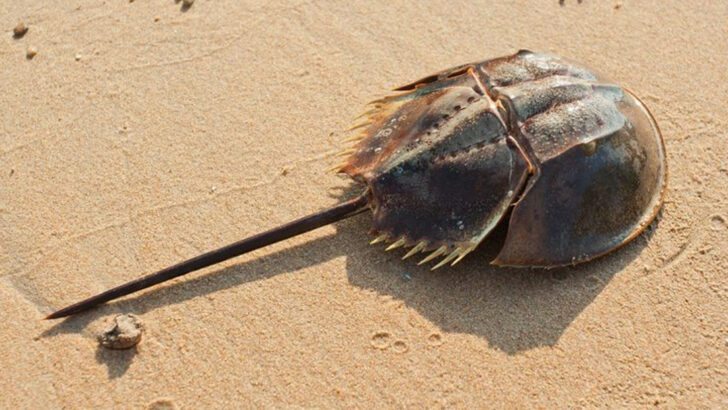Some animals said, “We’re good,” and hit pause—for millions of years.
While the rest of the planet kept shifting, mutating, and adapting, these creatures barely changed a scale, shell, or claw. They were built right the first time—and nature hasn’t bothered to mess with success.
Think prehistoric monsters hiding in plain sight.
Living fossils that walked with dinosaurs, survived mass extinctions, and still patrol our oceans, rivers, and forests like it’s the Jurassic.
These 12 animals aren’t leftovers—they’re legends.
And they’ve been playing the long game longer than we can imagine.
Horseshoe Crab

The horseshoe crab, a living fossil of the sea, has roamed Earth for over 450 million years. Its ancient design, featuring a hard shell and a long, spiky tail, remains virtually unchanged.
This marine survivor thrives in shallow coastal waters, where it feeds on worms and small mollusks. Despite its intimidating appearance, the horseshoe crab is harmless to humans.
Remarkably, its blue blood is used in medical research to detect bacterial toxins, a testament to its unique biology. Search for horseshoe crab on a sandy beach to catch a glimpse of this prehistoric marvel.
Coelacanth
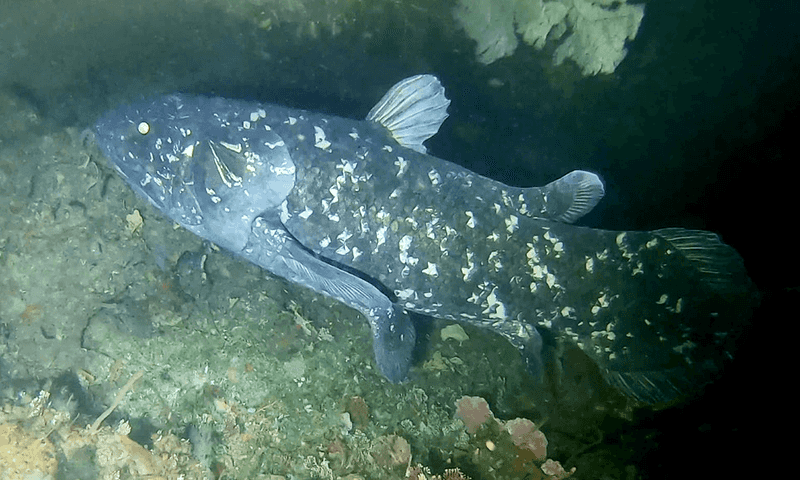
Considered extinct until 1938, the coelacanth is a legendary fish with lobed fins that date back 400 million years. This deep-sea dweller can grow up to six feet, exhibiting a distinctive blue hue that camouflages it in the ocean depths.
Its slow metabolism and low reproduction rate have allowed it to survive unchanged through eons. Coelacanths are often found near volcanic islands, resting in underwater caves during the day.
Their discovery was hailed as one of the most significant zoological finds of the 20th century, bridging a gap between fish and early amphibians.
Nautilus
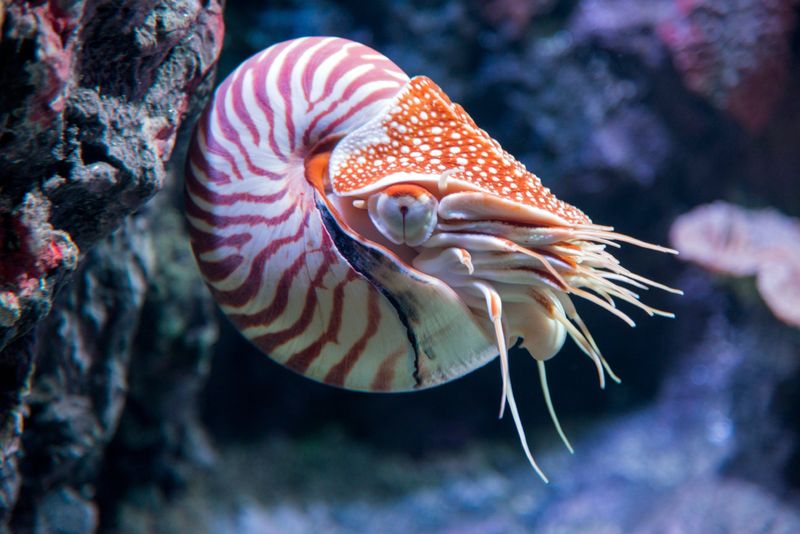
With its stunning, spiraled shell, the nautilus is a marine enigma that has remained unchanged for around 500 million years. This cephalopod navigates the ocean depths by controlling its buoyancy with precision.
Its ancient lineage is evidenced by its simple yet effective design, which has helped it thrive in diverse marine environments. The nautilus shell is divided into chambers, each serving a different purpose in its buoyancy control.
Its mesmerizing appearance and evolutionary longevity make it a subject of intrigue for scientists and marine enthusiasts alike.
Platypus

The platypus, an oddity of evolution, combines traits of mammals, birds, and reptiles. This monotreme, native to Australia, has remained largely unchanged for millions of years.
Its duck-billed snout, webbed feet, and egg-laying habits make it a biological anomaly. Equipped with electroreception, the platypus hunts underwater by detecting electrical signals.
Males possess venomous spurs on their hind legs, a rare trait among mammals. Its unique evolutionary path offers insights into early mammalian development.
Tuatara
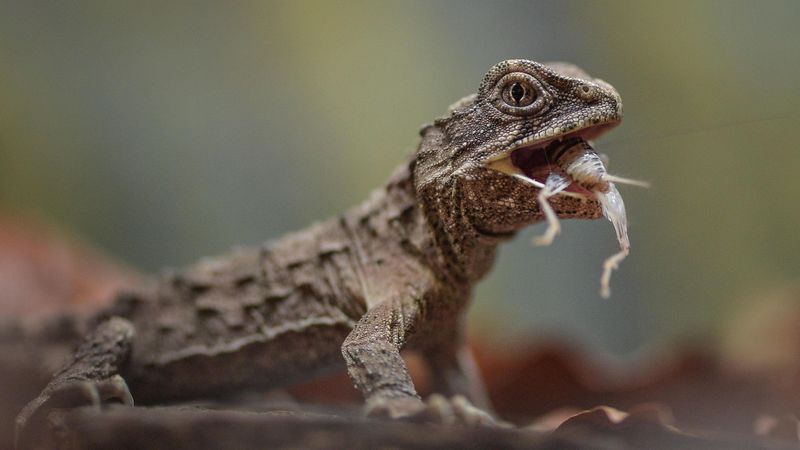
Residing primarily in New Zealand, the tuatara is not a lizard but a unique reptile lineage that diverged around 200 million years ago. Often termed a “living fossil,” it showcases ancient traits.
Tuatara possess a “third eye” on their forehead, which is sensitive to light and helps regulate their circadian rhythms. These reptiles thrive in cooler temperatures and have an extraordinarily slow growth rate.
Their ability to survive in isolation on small islands has allowed them to maintain their primitive characteristics over millennia.
Goblin Shark

The goblin shark, an elusive deep-sea predator, exhibits a lineage stretching back 125 million years. Its unusual appearance, with a long, flattened snout and pinkish skin, resembles a ghostly apparition.
This shark’s jaw can extend dramatically to capture prey, a trait unique among sharks. Typically found in deep waters, it remains an enigma to marine biologists.
Its rarity and distinctive features make encounters with goblin sharks a noteworthy event in ocean exploration.
Sturgeon
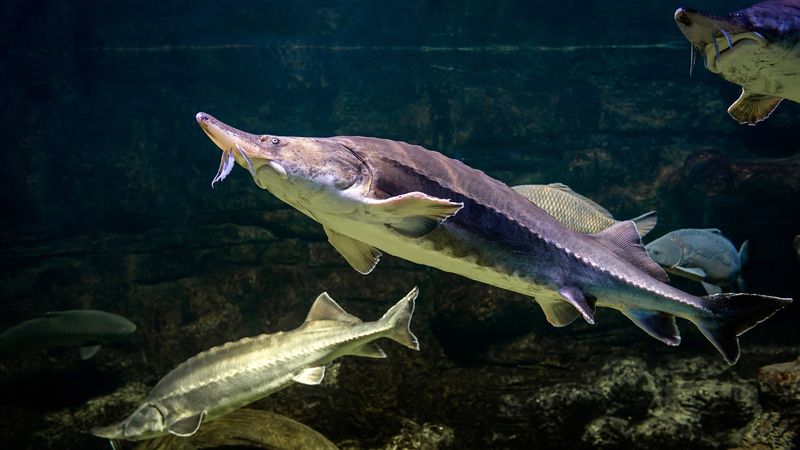
Possessing a lineage over 200 million years old, the sturgeon is an ancient fish that dwells in both freshwater and marine environments. Its armored body and elongated snout give it a prehistoric look.
Sturgeons are known for their roe, which is processed as caviar, a luxury delicacy. These fish can grow to impressive sizes, with some species reaching up to 20 feet long.
Their long lifespan and slow growth rates have helped them endure, though many species are now threatened by overfishing and habitat loss.
Crocodile
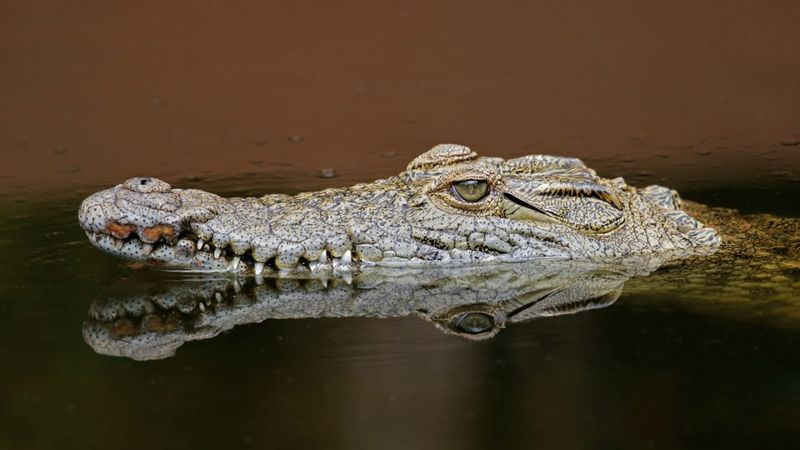
Crocodiles, with their fearsome jaws and impenetrable armor, trace their ancestry back over 200 million years. These formidable predators have adapted to a variety of habitats across the globe.
Their ability to regulate body temperature through basking and their efficient predatory tactics have contributed to their long-term survival. Crocodiles’ ancient lineage is evident in their anatomical features, closely resembling prehistoric ancestors.
Their survival through mass extinctions highlights their resilience and adaptability.
Lamprey
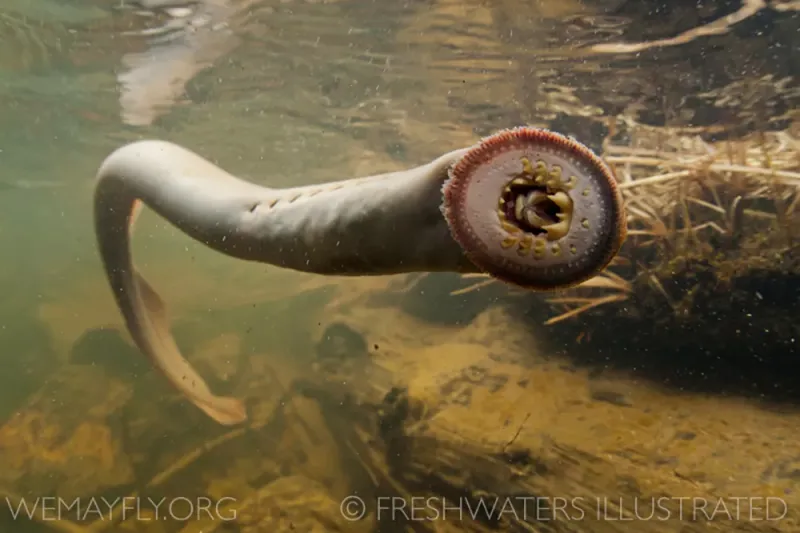
The lamprey, with its eerie, eel-like body and funnel-shaped mouth, has been a parasitic presence in aquatic ecosystems for over 360 million years. Its jawless design and unique feeding mechanism set it apart from other fish.
Lampreys attach to hosts using their sucker mouth, feeding on blood and bodily fluids. They inhabit both freshwater and marine environments, adapting to various ecological niches.
Their ancient lineage is reflected in their primitive features and parasitic lifestyle, offering a glimpse into early vertebrate evolution.
Alligator

The alligator, a relative of the crocodile, has prowled swamps and rivers for over 200 million years. Its robust build and powerful jaw make it a dominant predator in its environment.
Alligators exhibit remarkable adaptations, such as the ability to survive in both fresh and brackish water. Their vocalizations and social behaviors distinguish them from other reptiles.
Their resilience and adaptability have allowed them to endure through changing climates and landscapes, maintaining their ancient lineage.
Sea Turtle
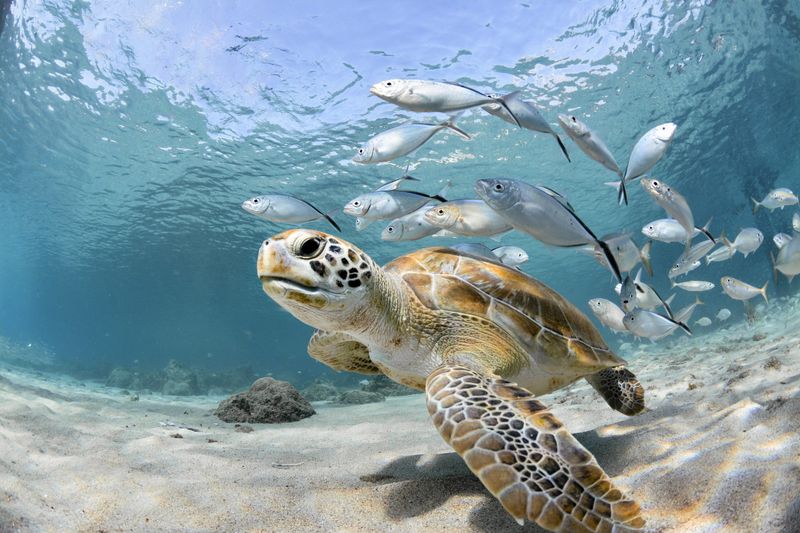
Sea turtles, ancient mariners of the ocean, have traversed the seas for over 110 million years. Their streamlined shells and powerful flippers enable them to journey vast distances.
These turtles return to their natal beaches to lay eggs, a behavior unchanged through millennia. Despite facing numerous threats, such as habitat loss and pollution, they continue to persevere.
Their long lifespan and migratory patterns offer insights into oceanic ecosystems and evolutionary biology.
Horseshoe Shrimp

The horseshoe shrimp, a tiny crustacean with a lineage dating back over 200 million years, thrives in its simple marine niche. Its transparency and small size make it a master of disguise.
Living in sandy or muddy environments, horseshoe shrimp feed on organic detritus, playing a crucial role in their ecosystems.
Their ancient lineage and minimal evolutionary changes highlight the success of simplicity in survival, offering a unique glimpse into the past.

